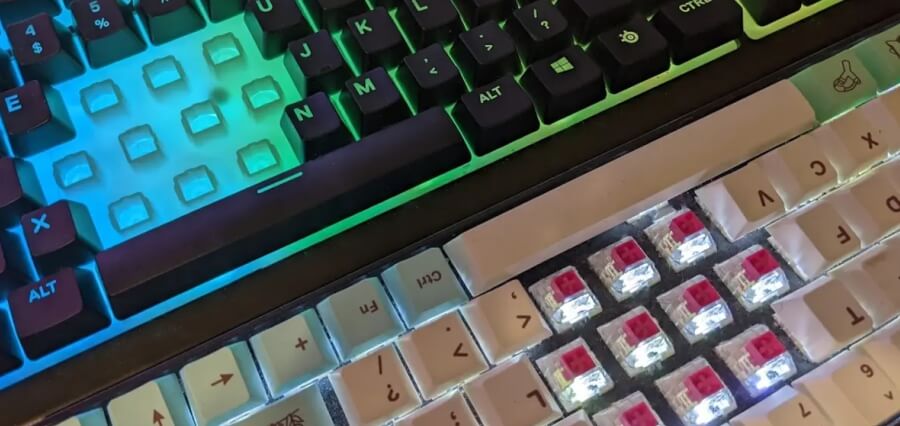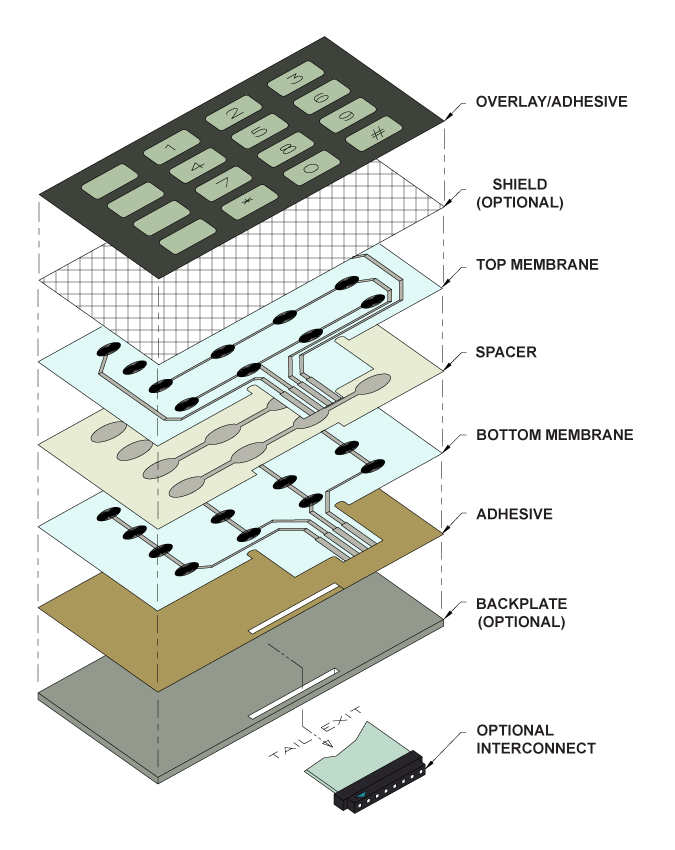The Full Overview to Membrane Switch Modern Technology and Its Applications
Understanding the Performance of Membrane Switches Over for Interface Tools
The functionality of membrane switches over represents a considerable advancement in individual interface design, incorporating efficiency with visual convenience. As markets significantly focus on individual experience, comprehending the subtleties of membrane layer button innovation comes to be important.
What Are Membrane Layer Switches?
Membrane buttons are ingenious user interface gadgets that help with individual communication with digital equipment. These flexible components include several layers, consisting of a graphic overlay, spacer, and a published circuit layer. The layout permits a seamless integration into numerous digital tools, enhancing both the aesthetic and useful facets of user interfaces.
Membrane layer buttons are typically utilized in a wide variety of applications, from home devices to commercial machinery and medical devices. Their building commonly includes a slim account, making them an ideal choice for small designs. The responsive feedback offered by these buttons can be engineered to meet details customer preferences, making sure efficient communication between the user and the tool.
Resilience is one more considerable advantage of membrane switches, as they are resistant to dirt, wetness, and chemicals, which enhances their life expectancy sought after atmospheres. Furthermore, these buttons can be personalized in regards to shape, size, and visuals style, enabling for branding and user-specific attributes. Generally, membrane switches over stand for a functional solution for enhancing customer experience in digital devices, incorporating functionality with visual appeal in an effective way.
Exactly How Membrane Switches Over Work
Operating on a straightforward principle, membrane layer switches use a split building and construction to sign up customer input properly. Each switch contains several layers, including a published circuit layer, a spacer layer, and a top visuals layer, which are created to work together perfectly. When a customer presses the top layer, it compresses the spacer layer, bringing the conductive components of the circuit layer into contact with each other.
This call creates a shut circuit, signaling the device to perform a certain feature. The style enables various configurations, including tactile feedback, which can enhance the customer experience by providing a physical feeling upon activation. The products utilized in membrane layer switches often consist of flexible substratums, such as polyester or polycarbonate, which ensure durability and durability against wear and tear.

Secret Advantages of Membrane Switches

Another significant advantage is their density. Membrane layer buttons are slim and lightweight, read here which makes it possible for makers to conserve space in their tools without sacrificing performance. This attribute is particularly valuable in applications where weight and quantity are important factors to consider.
In addition, membrane layer switches are resistant to dirt, moisture, and chemicals, improving their durability. This strength expands their lifespan and minimizes the requirement for regular substitutes, resulting in expense financial savings over time.
In addition, the tactile feedback offered by membrane layer buttons can be enhanced to improve user communication. They can consist of attributes such as raised buttons or distinct clicks, boosting use and customer experience.
Applications Throughout Industries
Interface gadgets making use of membrane layer buttons prevail in a vast array of markets, showcasing their flexibility and performance. Membrane Switch. In the clinical market, membrane buttons are indispensable to tools such as diagnostic devices and person tracking systems, where their resilience and convenience of cleansing are vital for keeping hygiene criteria. Similarly, in the auto market, these switches are used in dashboard controls and infomercial systems, providing a sleek and modern user interface for customers.
Moreover, the customer electronics market gain from membrane layer buttons in home appliances and handheld gadgets, where compact style and straightforward interfaces improve user experience. Industrial applications likewise take advantage of membrane layer changes for control board in machinery and automation systems, highlighting their toughness and resistance to harsh atmospheres.
In the aerospace and defense sectors, membrane layer buttons are utilized in cabin controls and devices, where integrity and efficiency under severe problems are vital. Furthermore, the pop over to this site pc gaming market progressively incorporates membrane switches in controllers and arcade machines, adding to an engaging user experience. On the whole, the convenience of membrane layer switches allows their prevalent use across countless fields, highlighting their importance in modern user interface layout.
Future Patterns in Membrane Switch Over Innovation

Additionally, using innovative materials, such as polycarbonate and polyester films, is anticipated to climb, offering improved durability and resistance to ecological stress factors. These products add to the general durability of membrane layer buttons, making them suitable for harsher industrial applications.
In addition, the incorporation of wise technology, consisting of IoT their explanation connection, will enable membrane switches to communicate with other gadgets and systems, promoting an extra interactive user experience. This trend aligns with the growing demand for smart gadgets throughout different markets, from medical care to customer electronic devices.
Last but not least, modification alternatives are anticipated to expand, allowing manufacturers to create bespoke solutions customized to details customer demands and preferences. These advancements will position membrane buttons as essential components in the advancement of interface technology.
Conclusion
To conclude, membrane layer switches over stand for a critical development in interface modern technology, supplying a dependable and versatile remedy for varied electronic applications. Their split building and construction assists in compact layout, while features such as responsive comments enhance customer interaction. The longevity versus environmental factors better strengthens their utility throughout multiple sectors. As improvements in material scientific research and touch sensing modern technologies continue, the functionality and applicability of membrane layer switches are anticipated to expand, enhancing their relevance in modern-day digital tools.